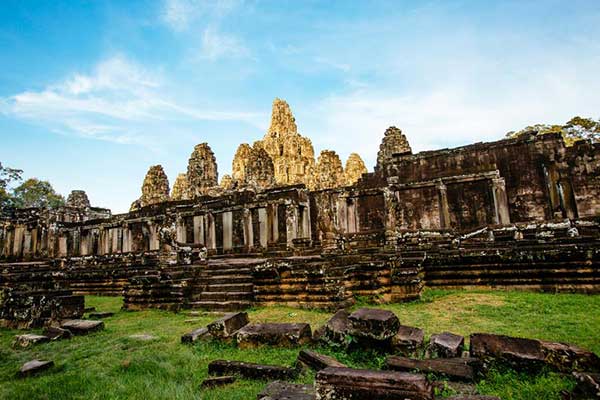Chinese tourists pack into ruins of Angkor
 |
|
Angkor Wat,the world's largest surviving religious structure.[Photo/Xinhua] |
Some urban Chinese avoid traveling around Spring Festival and the National Day holiday week as most of their compatriots are on the move then.
I have largely stuck to this unconventional wisdom over the years in the country.

But last week, when 6 million people from the Chinese mainland were expected to travel to foreign shores, I ventured to Cambodia, a country of 15 million, with a child in tow.
We landed in the same place as hundreds of Chinese tourists: Siem Reap, a province in Cambodia's northwest where the ancient wonder in stone - Angkor Wat - is located.
A friend in that country joined us as we explored the ruins of what is considered the world's largest surviving religious structure, built first in Hindu style and then in Buddhist, starting from the rule of the young Khmer King Jayavarman II in the ninth century up to the 13th century or so by his successors, most notably Suryavarman II.
The moss-and-lichen-clad temple city, spread across some 160 hectares, could take days to fully discover.
The classic Khmer architecture and esthetics amid the lush natural scenery are features that perhaps draw modern visitors to it besides the curiosity of faith.
In the few hours we had, we got glimpses of the central complex of Angkor Wat, which is surrounded by a placid moat, and Bayon and Ta Prohm, two significant auxiliary temples.
The calmness of the area makes it hard for a foreigner to imagine the violent history of modern Cambodia.














